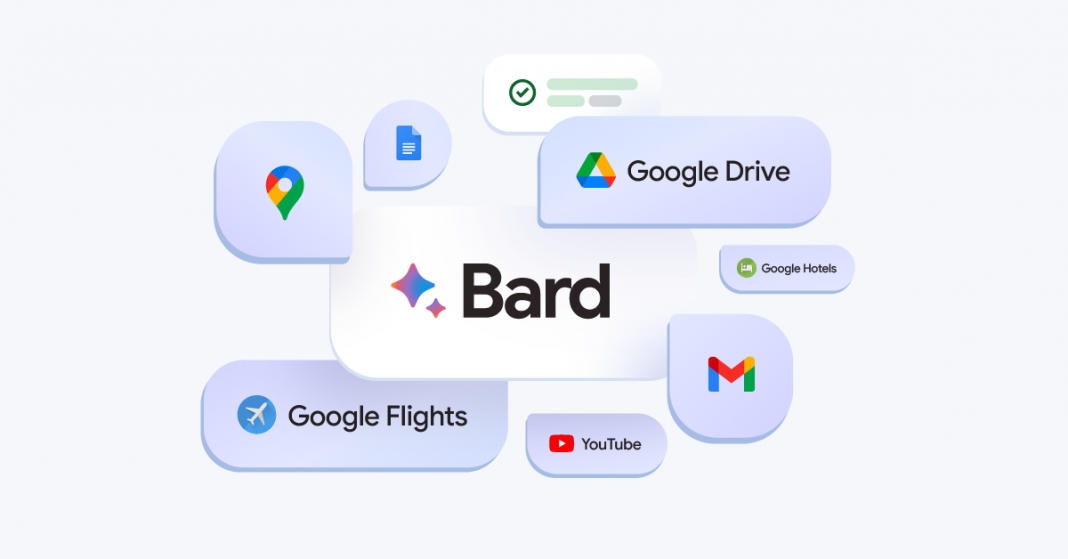Tech titan Google announced on Tuesday, Sept. 19, major upgrades to its generative artificial intelligence (AI) chatbot, Bard.
One particular update stands out: Bard Extensions. With this update, Bard can now pull real time and personal user information from Google apps and services, including Gmail, Docs, Drive, Google Maps, YouTube, and Google Flights and hotels.
In a virtual briefing, Bard VP of engineering Amar Subramanya, stated: “We are, for the first time, combing the magical power of generative AI will the Google apps you use every day… and we think these integrations will transform people’s lives.”
Bard’s upgrades come when competition among generative AI chatbots is well underway. In fact, ChatGPT — the ChatBot that brought generative AI to the public’s attention in November of last year — is just the tip of the iceberg as more bots specialized for different industries have been released.
By maximizing the data and potential for personalization that comes from its widely used apps, though, Google aims to set Bard apart as an intuitive assistant that can help plan trips, coordinate schedules, as well as retrieve and summarize information from email threads and documents, among other tasks.
Google provided sample prompts to illustrate Bard’s expanded possibilities with these extensions. One such prompt revolved around planning a trip with friends.
In this one conversation with Bard, Google showed how users can prompt the chatbot to find the dates that work for all trip members from Gmail threads, look up real-time flight and hotel information, see Google Maps directions to the airport, and even watch YouTube videos for fun activities in their destination.
Other demo prompts were easily applicable to users who are too busy to read through piles of documents. For instance, users can ask Bard to find a Google Docs file shared by another person and summarize it in snappy bullet points.
In a more specific scenario, the prompt involved requesting the chatbot to retrieve a user’s most recent lease agreement in PDF format stored in their Google Drive and check the security deposit amount.
As expected, however, Bard’s easy access to personal Gmail accounts, Drives, and Docs, raises worries about data privacy.
Google assures its users that content from Gmail, Docs and Drive is not seen by human reviewers. It’s neither used by Bard to show ads nor employed to train the Bard model, the company said.
The technology giant also noted that users can view which extensions Bard is utilizing to generate its response and can turn off these extensions at any time.
“It’s not possible for us to be bold in the long run if we’re not responsible from the get go, and privacy is one of the key aspects of being responsible,” Subramanya confirmed.
In addition to its Bard extensions, Google’s other updates to Bard include enhanced double-checking features, collaborations on Bard conversations, and wider access to features previously only available for English language users.
Google’s improved double-checking feature available through the new “G” icon below Bard’s responses hopes to address concerns about AI hallucinations. Hallucinations are the occasional tendency of AI chatbots to generate inaccurate information and claim it as fact.
Users can now click on the “G” below Bard responses and Bard will evaluate whether there is content across the web to substantiate its response.
Sections of the response will be highlighted in different colors according to the level of substantiation found and users can click the highlighted parts to learn more about supporting or contradicting information supplied by Google Search. Currently, this feature is only available for English language responses.
The next update or Bard collaborations intends to facilitate brainstorming as a team. Users can share a Bard chat through a public link, then another user can continue the conversation and ask Bard more questions about that topic, or use it as a starting point for their own ideas.
Lastly, some features that were only available to English language users like uploading images with Google Lens, receiving Google Search images in responses, and modifying Bard’s responses to be simpler, longer, shorter, more professional, or more casual are now accessible in the more than 40 languages Bard supports.
Google emphasized during this launch that these upgrades were made possible by improvements to their PaLM2 large language model. PaLM2 replaced LaMDA, the original model that powered Bard, last month.
Since then Google has applied user feedback and implemented reinforcement learning techniques to train PaLM2 to be more accurate and creative.




